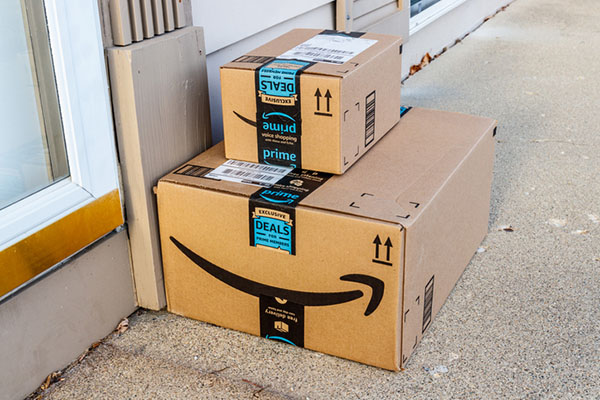Amazon and FedEx disconnect grows deeper, according to report

A fair amount of dissonance between global e-commerce giant Amazon and freight transportation and logistics bellwether FedEx appears to still be intact, according to a Wall Street Journal report published earlier today.
According to the report, due to what Amazon called a ”decline in performance, it is blocking third-party sellers from using FedEx Ground delivery for Amazon Prime shipments, with the ban taking effect this week.
This follows two separate developments from earlier this year, when FedEx announced in June it made a strategic decision not to renew the FedEx Express U.S. domestic contract with Amazon, which was followed in August by a decision to sever its ties with the global e-commerce bellwether on the ground side as well.
In regards to the current situation, the WSJ report said that this ban would last “until the delivery performance of these ship methods improves,” which was based on an e-mail sent by Amazon to merchants. And it added that the e-mail indicated Amazon said sellers can use FedEx’s quicker and more costly Express service for Prime orders of FedEx Ground for non-prime shipments.
“While this decision affects a very small number of shippers, it limits the options for those small businesses on some of the highest demand shipping days in history and may compromise their ability to meet customer demands and manage their businesses,” a FedEx spokesman told LM. “FedEx Ground stands ready to support our customers and will continue to deliver record-breaking volume this holiday season.”
Jerry Hempstead, president of Hempstead Consulting, said that this move could have major ramifications for shippers.
“There are a lot of folks that are big shippers that use Amazon to sell their items and ship with FedEx,” he said. “If there are no exceptions then these guys are out of business for the rest of the season because if you don’t have an agreement with UPS or DHL the shipping costs will kill you.”
This development serves as another example of Amazon taking significant steps to bring more transportation and logistics processes in-house. That is supported by data recently issued by ShipMatrix, a subsidiary of Pittsburgh-based SJ Consulting, which recently noted that Amazon—through its Amazon Delivery Service Partners (DSP) and Flex drivers—estimates that these is expected to deliver more than half of Amazon’s U.S. parcel volume, which equates to 275 million packages between Black Friday and New Year’s Eve.
And with Amazon delivering 275 million packages on its own, which accounts for 60% of its volume between Thanksgiving and New Year’s Eve, according to ShipMatrix, would present challenges for other carriers, including UPS, USPS, and some regional carriers, if they had to deliver those 275 million packages.
Looking at the individual carrier performances for the week ending December 7, ShipMatrix reported on-time delivery for UPS at 92.7, with FedEx at 90.4%, USPS at 92.3%, and Amazon (primarily through its last mile delivery services) at 93.7%. The firm added that consumers in New England states dealt with roughly 20% of their deliveries coming later than expected, due to weather conditions.
ShipMatrix said that based on its research, Amazon customers may also be experiencing greater delays in delivery of their orders for various reasons, including: delays in the fulfillment of the order, misunderstanding about the cut of time to receive next day delivery and certain products still having a two day delivery promise.
And it also observed that as Amazon Logistics has expanded its delivery capabilities by 127% annually from 2018 to 2019, “it is faced with additional challenges in getting all the parcels on the vans making the last mile delivery.”

Article Topics
Latest in Logistics
April Services PMI contracts after 15 months of growth, reports ISM 2023 industrial big-box leasing activity heads down but remains on a steady path, notes CBRE report U.S. rail carload and intermodal volumes are mixed in April, reports AAR Q1 U.S. Bank Freight Payment Index sees shipment and spending declines S&P Global Market Intelligence’s Rogers assesses 2024 import landscape Pitt Ohio exec warns Congress to go slow on truck electrification mandates Q1 intermodal volumes are up for second straight quarter, reports IANA More LogisticsAbout the Author
Subscribe to Logistics Management Magazine

Find out what the world's most innovative companies are doing to improve productivity in their plants and distribution centers.
Start your FREE subscription today.
May 2024 Logistics Management

Latest Resources














